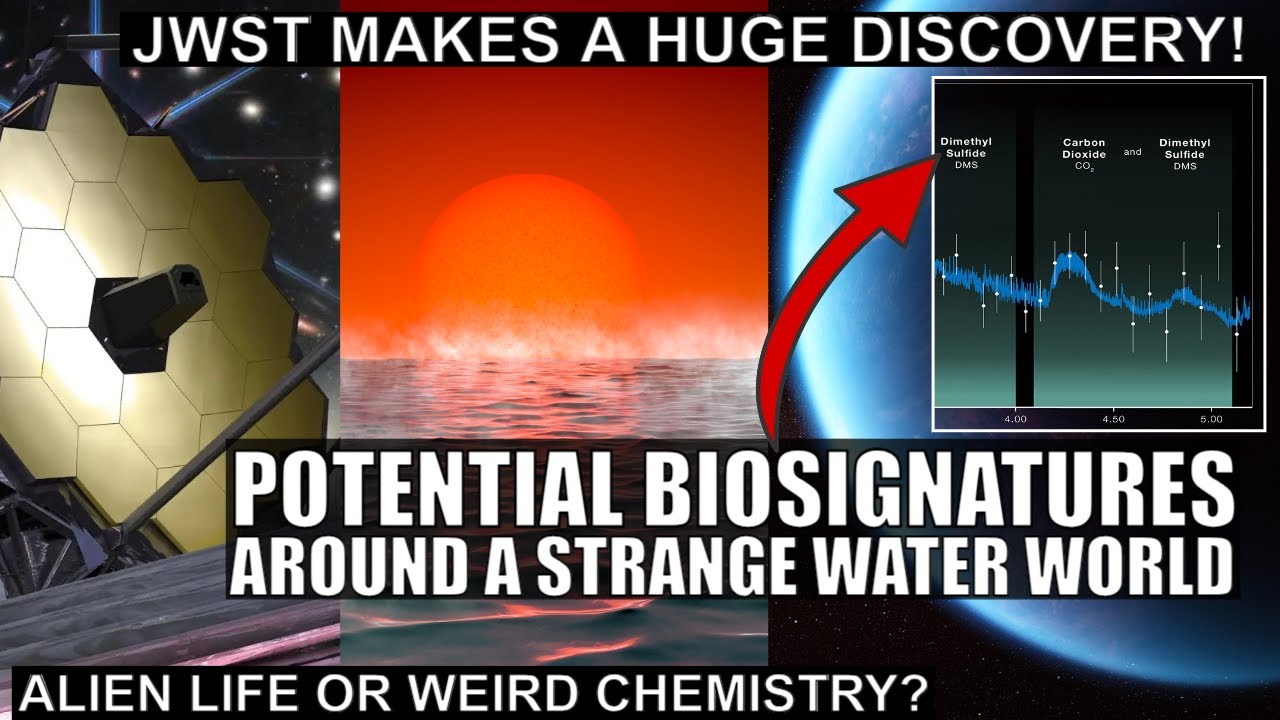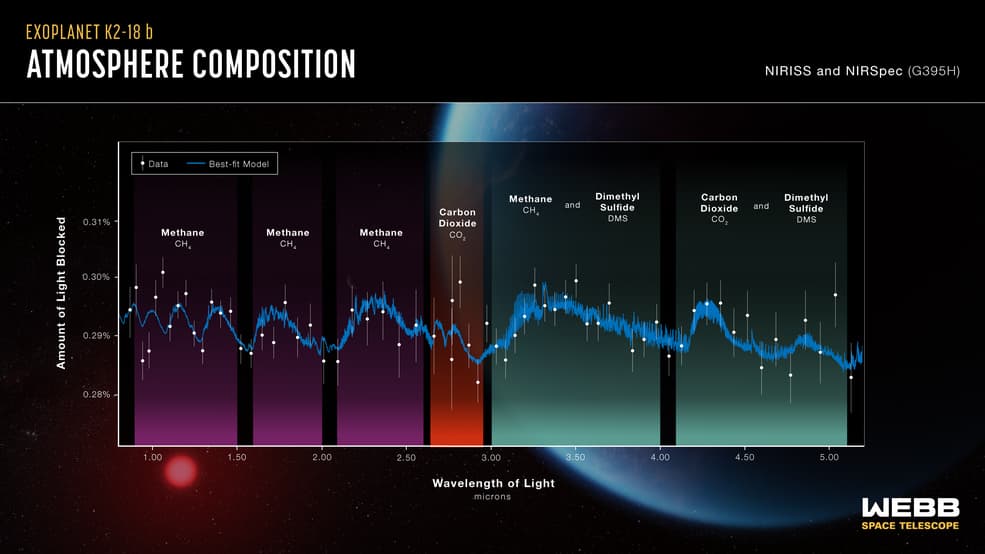K2-18b is the designation given to an exoplanet discovered in 2015 by the Kepler Space Telescope during its extended mission. The discovery has since been confirmed by observations with the Spitzer Space Telescope and by Doppler measurements of its gravitational perturbation on its host star, a red dwarf (class M3V) 124 light-years from the solar system.
K2-18b orbits its star every 32.94 days which, given the feeble glow of its star (just 2.3% of the Sun’s luminosity), places it in the “habitable zone”, where thermodynamic considerations suggest surface temperatures might allow the existence of liquid water. The mass of the planet is around 8.6 times that of the Earth, which puts it in the category of a “super-Earth” or “mini-Neptune”, a type of planet not found in our solar system but very common among planets discovered orbiting other stars (but note that the techniques we use to find such planets are more sensitive to massive planets than smaller ones, so a selection effect may be in play here).
The planet was detected because the plane of its orbit as seen from the Earth causes it to transit (pass in front of) its star periodically. These transits allow the composition of its atmosphere to be glimpsed through the absorption of starlight that passes through it during transits, and in 2019 such observations found the signature of water vapour in the atmosphere, suggesting the planet might be a “water world” with a global ocean, perhaps beneath a hydrogen-rich atmosphere like the solar system’s gas giants. Because astronomers cannot resist giving every new discovery a clever name, this hypothetical type of planet has been named a “hycean world”, with the neologism a portmanteau of “hydrogen” and “ocean”.
In 2023, K2-18b was observed with the James Webb Space Telescope and a spectrum obtained of absorption by its atmosphere.
The observations were reported in a paper posted on arXiv on 2023-09-11, “Carbon-bearing Molecules in a Possible Hycean Atmosphere” (full text at link). Here is the abstract.
The search for habitable environments and biomarkers in exoplanetary atmospheres is the holy grail of exoplanet science. The detection of atmospheric signatures of habitable Earth-like exoplanets is challenging due to their small planet-star size contrast and thin atmospheres with high mean molecular weight. Recently, a new class of habitable exoplanets, called Hycean worlds, has been proposed, defined as temperate ocean-covered worlds with H2-rich atmospheres. Their large sizes and extended atmospheres, compared to rocky planets of the same mass, make Hycean worlds significantly more accessible to atmospheric spectroscopy with the JWST. Here we report a transmission spectrum of the candidate Hycean world, K2-18 b, observed with the JWST NIRISS and NIRSpec instruments in the 0.9–5.2 μm range. The spectrum reveals strong detections of methane (CH4) and carbon dioxide (CO2) at 5σ and 3σ confidence, respectively, with high volume mixing ratios of ~1% each in a H2-rich atmosphere. The abundant CH4 and CO2 along with the non-detection of ammonia (NH3) are consistent with chemical predictions for an ocean under a temperate H2-rich atmosphere on K2-18 b. The spectrum also suggests potential signs of dimethyl sulfide (DMS), which has been predicted to be an observable biomarker in Hycean worlds, motivating considerations of possible biological activity on the planet. The detection of CH4 resolves the long-standing missing methane problem for temperate exoplanets and the degeneracy in the atmospheric composition of K2-18 b from previous observations. We discuss possible implications of the findings, open questions, and future observations to explore this new regime in the search for life elsewhere.
You don’t often encounter the phrase “holy grail” in a paper accepted for publication in Astrophysical Journal Letters.
The signatures of carbon dioxide and methane are unambiguous, and the absence of ammonia suggests the existence of a water ocean. Most intriguing is the potential detection in the spectrum of dimethyl sulfide (DMS). Although the signal is not as “in your face” as that of carbon dioxide and methane, there’s a bump, right where it would be expected for DMS. What’s interesting about DMS is that on Earth, DMS in the atmosphere is produced almost entirely by phytoplankton in the oceans and the presence of the molecule has been previously suggested as a biosignature which might indicate the presence of microbial life on water world exoplanets.
Follow-up observations with the James Webb Space Telescope should be able to provide additional evidence for or falsify this tentative detection of DMS in the atmosphere of K2-18b.

